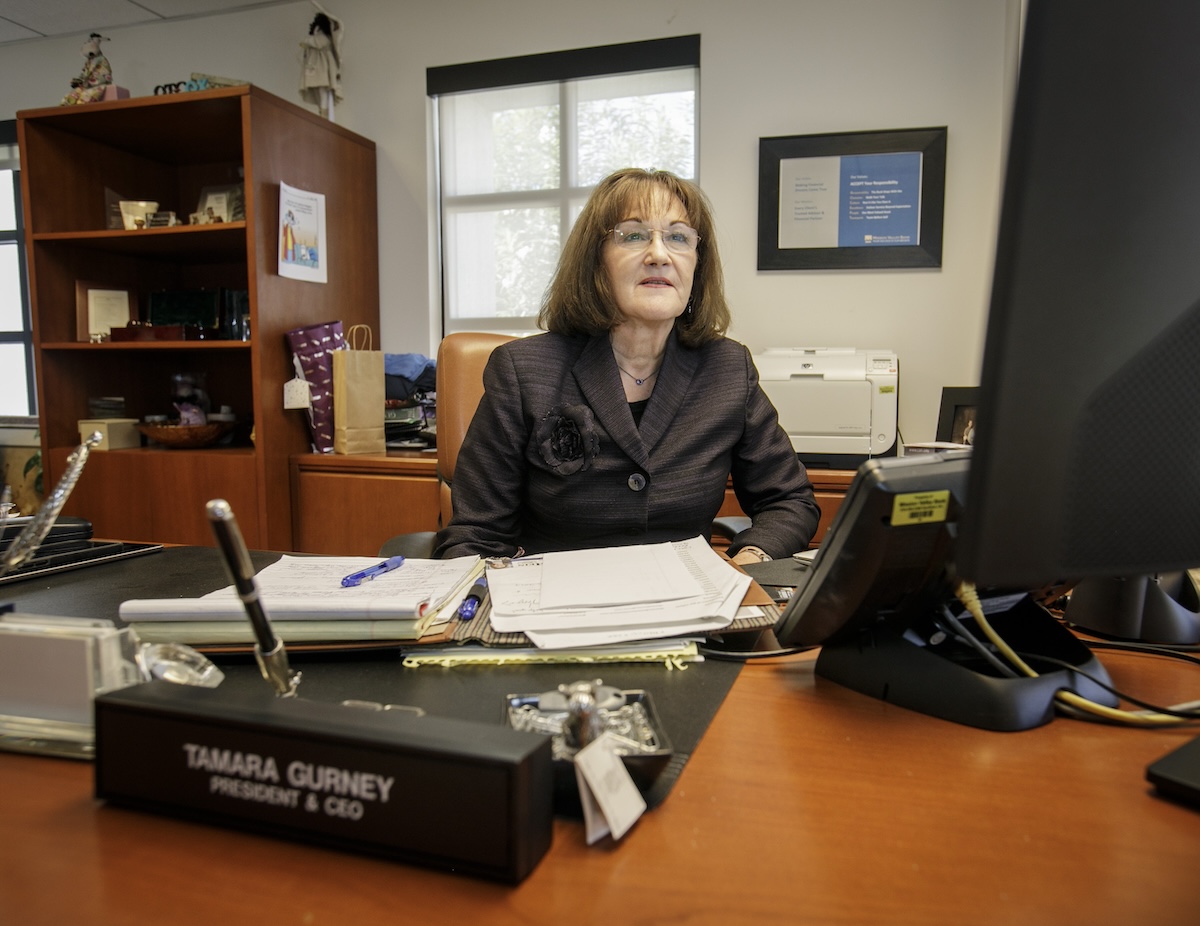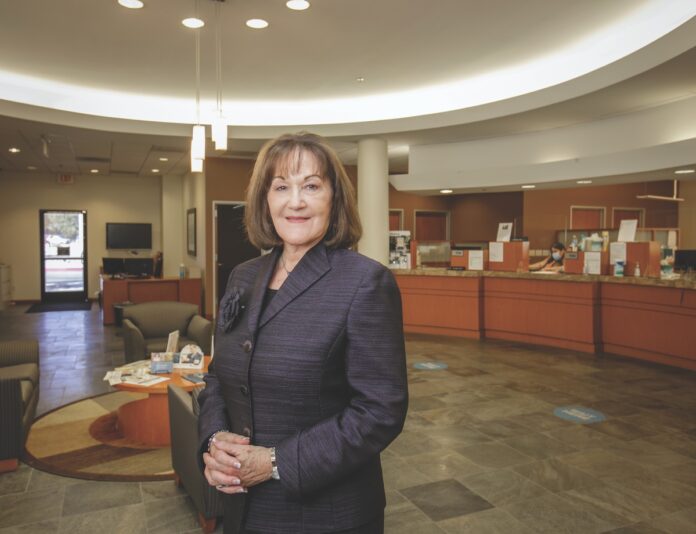Mission Valley Bank saw its profits double over the first nine months of last year, thanks in part to something unusual: its accounts receivable financing product – a lending approach that may look like factoring but one that bank executives say is, in fact, substantially different.
The Sun Valley-based bank’s total assets were $588 million as of Sept. 30, up more than 6% from the end of 2022. And through the first nine months of 2023, Mission Valley reported a net income of $7.6 million, a notable increase over the $3.7 million reported during the same period in the previous year.
Mission Valley Bank’s president and chief executive, Tamara Gurney, said a sizeable amount of that growth – approximately $1.8 million of the net income – can be attributed to its accounts receivable financing, which the bank first launched more than a decade ago during the Great Recession but didn’t really have any substantial success with until recently.
“We fund on invoices for sale,” explained Heidi DeMattos, the bank’s senior vice president and manager of accounts receivable lending. “With a product like this, Mission Valley Bank says, ‘We will take your invoice, and we will fund you around 90% of it on day one.’ Then the customer pays that invoice off, and so it’s a self-liquidating line of credit. … It just bridges the gap between a sale and collection for the business.”
That product description may sound familiar for those who already know something about factors – financial firms that agree to pay companies the value of an invoice upfront minus a fee. Trucking businesses, manufacturing companies and health care providers sometimes turn to factors to get cash quickly to cover immediate needs such as payroll, equipment costs or material expenses.
Most banks, of course, make collateral-based loans. In that arrangement, a borrower agrees to pay back a loan with interest and in turn pledges an asset such as real estate or something else of value that the lender can seize if the loan isn’t repaid. Factoring does not require the borrower to put up collateral, but the borrower agrees to give up part of the future income from an invoice in return for cash today. Factoring is a relatively rare offering for most commercial banks, in part because it often requires specialized expertise and talent that can not only be expensive but hard to find.
Not exactly factoring
DeMattos was quick to note, however, that while Mission Valley Bank’s accounts receivable financing product may share some similarities with factoring, what her financial institution is offering customers is really different. And much of that, DeMattos said,
stems from the bank’s focus on building a partnership with its clients.
“Traditionally, all factoring companies really care about is the invoice that they bought,” DeMattos said. “As a local community bank, we want the business we work with to do well, so we don’t do certain things that factoring companies do.”
For example, Mission Valley Bank doesn’t put its accounts receivable financing clients in long-term contracts; neither does it require a monthly minimum amount to participate. And while the bank does, of course, charge a fee, DeMattos said those costs are made clear upfront and don’t feature hidden charges. She also said Mission Valley won’t ever reach out to a borrower’s customers in an effort to collect on an invoice.
“We value the customer’s relationships,” she explained. “And they maintain that control of their relationships with their clients.”
Nadhem Boudoukhane, the chief executive of Beverly Hills-based Carthage LLC, which provides such products as olive oil, candles, linens and wooden utensils manufactured overseas to U.S. retailers including Trader Joe’s, T.J. Maxx and Marshalls, started working with Mission Valley and taking advantage of its financial accounts receivable financing product in June.
“We’ve done close to $9 million with them already in pure financing, and we have about $6 million lined (up),” Boudoukhane said. “It’s the only bank that offers this so far. I’ve never had any experience with any other bank that offers this service.”
Boudoukhane also said his business has grown by roughly 20% over the past six months, thanks in part to the new partnership with Mission Valley Bank.
“They’re just much more lean and understanding versus regular banks,” he explained. “They maneuver with you to understand your business in a better way, and they see how they can find solutions to help you grow the business – unlike other banks, where all they care about is collateral.”
Expertise critical

DeMattos joined Mission Valley in April of 2022, but began working with the bank in 2017 while she was employed at Missouri-based financial technology company Jack Henry; she was a specialist on that company’s BusinessManager software platform.
Mission Valley Bank purchased a licensing agreement from Jack Henry for that BusinessManager software to power its accounts receivable financing product, but Gurney said it wasn’t really until Mission Valley Bank hired DeMattos that it began to see a meaningful impact.
“It was fairly flat for many years until we came across Heidi,” Gurney recalled. “It’s a product where you have to have an expert. … You can’t just open the doors and start making these loans and expect it to be a success or to be a robust part of your overall revenue stream. You have to have someone like Heidi to come in that really makes this work. It’s a specialized product that requires that kind of expertise.”
According to DeMattos, Mission Valley Bank’s accounts receivable financing portfolio had a commitment of $4.5 million when she came onboard in April of 2022.
“Today, we have a commitment amount of $57.5 million through this product,” she said. “And year to date just this year (2023), we have funded over $180 million into businesses – the vast majority of which are in the San Fernando Valley.”
Gurney noted, meanwhile, the bank’s Small Business Administration loan business has long been a leading revenue generator for the bank; through October of 2023, SBA generated $6.5 million.
“Heidi’s team has surpassed $2 million this year through October,” Gurney said. “So, it’s well on its way to becoming a very significant piece of our bottom-line income.”
Gurney added that she is particularly proud of how the bank’s accounts receivable financing product has helped the institution better accomplish some of its earliest goals.
“There’s been stress in the economy, and we know that small-business owners – with high interest rates now – are struggling with cash flow,” she explained, noting that the lending helps local businesses pay employees and then flows out in turn to other regional companies.
“The tentacles from this are really supporting the financial well-being of our community, and that’s what we exist for,” Gurney said. “This is a really important element of what we are committed to doing now and going forward.”
